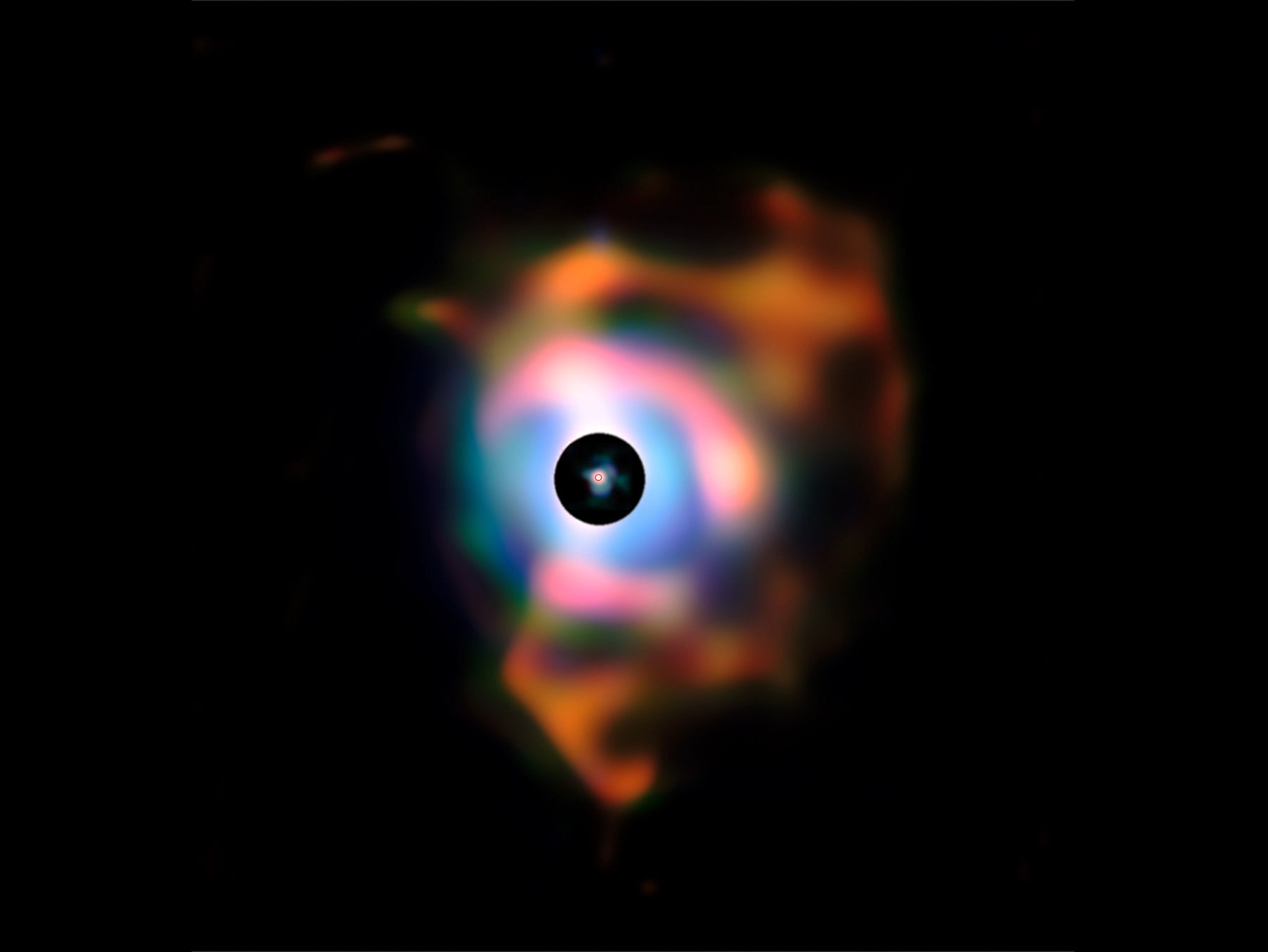Create a free profile to get unlimited access to exclusive videos, sweepstakes, and more!
Betelgeuse's sandy belch

For one of the brightest stars in the sky, Betelgeuse still has some surprises up its sleeve. We've known for a couple of years it's surrounded by a cloud of gas, but new observations show that nebula is far larger than previously thought!
[Click to enorionate.]
This new image is care of the Very Large Telescope, and shows a very deep and very high-resolution shot of Betelgeuse in the infrared. The inner black circle is the 2009 shot of the star and its surrounding gas -- what we knew about before -- and the big image shows all the gas around it just discovered. At the very center is a red circle indicating the actual size of Betelgeuse on this scale -- it's a red supergiant, and nearly two billion kilometers in diameter.
This structure is actually a wind of material blown off of the star itself. The exact mechanism behind this is unclear, though. Red supergiants are so big that gravity on their "surface" (they don't really have a surface; they just kinda fade away into space) is very weak, and they can barely hold on to the material there. They are also incredibly luminous -- Betelgeuse is 6,000 trillion kilometers away, yet one of the brightest stars in the sky -- so much so that the pressure of light is very strong. This pressure can lift material off the surface and blow it into space. It's also known that Betelgeuse has gigantic convection cells bringing hot material from deep below up to the surface, and that's part of this process as well.
Once the material is ejected it forms into dust grains: complex molecules including hydrocarbons. The astronomers doing this observation detected oxygen-rich dust in this nebula (PDF), which given the environment is most likely silica or alumina. Silica, also known as silicon dioxide, is the main constituent of sand and quartz! That's the most common constituent in the Earth's crust -- over 60% by mass -- and we think that a lot of the materials in the Earth's crust actually formed in the winds of red giants and supergiants.
Think about that the next time you're playing at a beach this summer. Billions of years ago, some now long-dead red star belched silicon dioxide into space, seeding a nearby nebula with materials ... and this cloud collapsed to form our Sun and planets, with some of that interstellar silicon dioxide making up the sand under your feet.
Not to mention that a lot of that water you see in the ocean came from giant comets slamming into the Earth shortly after it formed. Does that make your heart pound, your blood race? Because the iron in your hemoglobin came from massive stars that exploded long ago. If that makes you smile, why, the calcium in your teeth most likely came from an entirely different kind of star that exploded eons ago as well.
We're directly tied to stars like Betelgeuse.
And oh: While you're at the beach, do me one more favor. Find a grain of sand, just a single grain about a millimeter on a side. Now give it to a friend, placing it on their outstretched finger. Walk about 40 meters away, turn around, and look at your friend. The grain of sand will be invisible to your eye, far too small to see. Yet at that distance, that grain of sand appears to be the same size as the entire image above of Betelgeuse.
And you thought you were just going to the beach.
Someday, Betelgeuse too will explode as a supernova. It will briefly become as bright as the Moon, then fade over months. The material we see here will get slammed by octillions of tons of gas moving outward 10,000 times faster than a rifle bullet, destroying it. And when it's all done, our familiar constellation of Orion will be left without his right shoulder.
But it's worth it. What planets will coalesce, what suns will shine, what forms of life will one day arise from that material, and wonder which star it was to which they owe their existence?



























